Bridging heritage and community needs: A look at Punggol Coast MRT station before Dec 10 opening
Sign up now: Get ST's newsletters delivered to your inbox
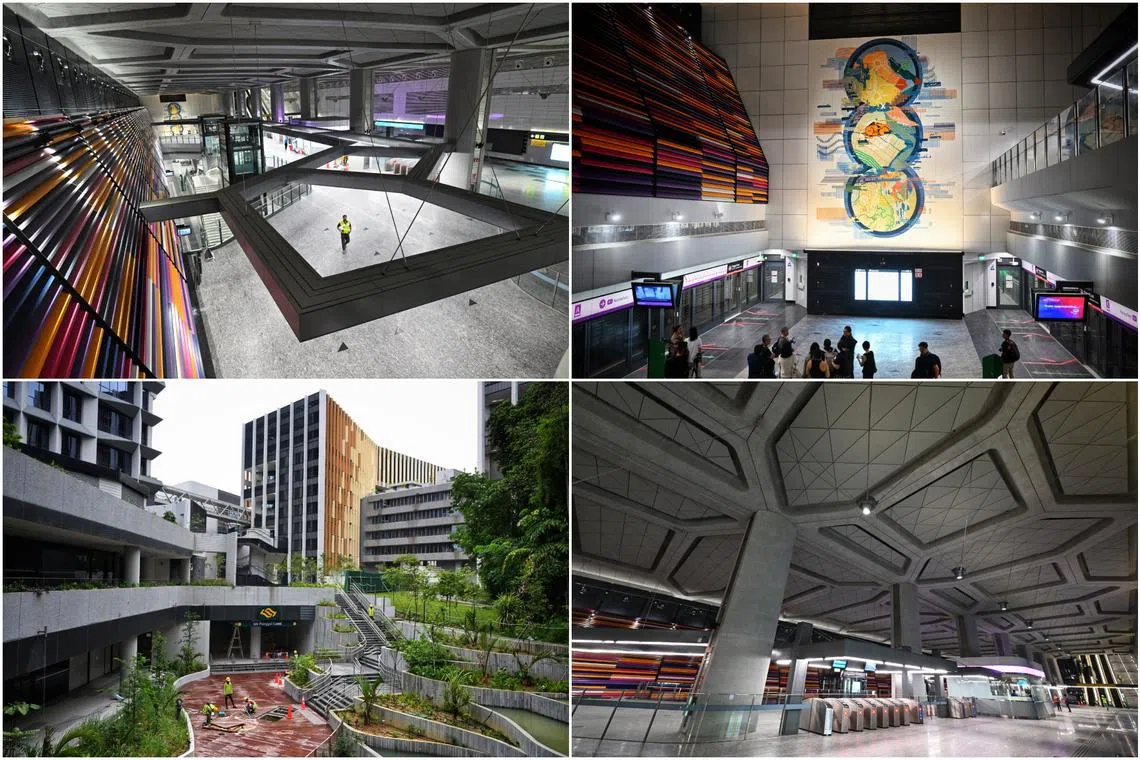
The station on the North East Line took four years to design and six years to build.
ST PHOTOS: CHONG JUN LIANG
Follow topic:
SINGAPORE – At the new Punggol Coast MRT station, each of the 11 huge columns in the concourse branches into beams across the ceiling, much like the sprawling roots of mangrove trees.
The design pays homage to Punggol’s history, as does a giant 9.6m by 7.2m artwork in the station by street artist Zul Othman featuring the evolution of Punggol, which was a fishing village and home to Singapore’s first zoo.
The columns support the station and the Punggol Digital District (PDD) above, which were designed and built as one.
The Punggol Coast station, a 1.6km extension from the existing Punggol station on the North East MRT Line (NEL), will open for passenger service on Dec 10 at 3pm
It will be the terminal station of the 22km NEL, serving those getting to not only the PDD but also the Singapore Institute of Technology’s (SIT) Punggol campus and the upcoming Punggol Coast Mall.
The station was designed by the Land Transport Authority (LTA), and its construction was jointly managed by LTA and JTC Corporation, the master planner and developer of the PDD.
Besides the mangrove-inspired columns, passengers will see a series of pendant lights suspended from the high ceiling.
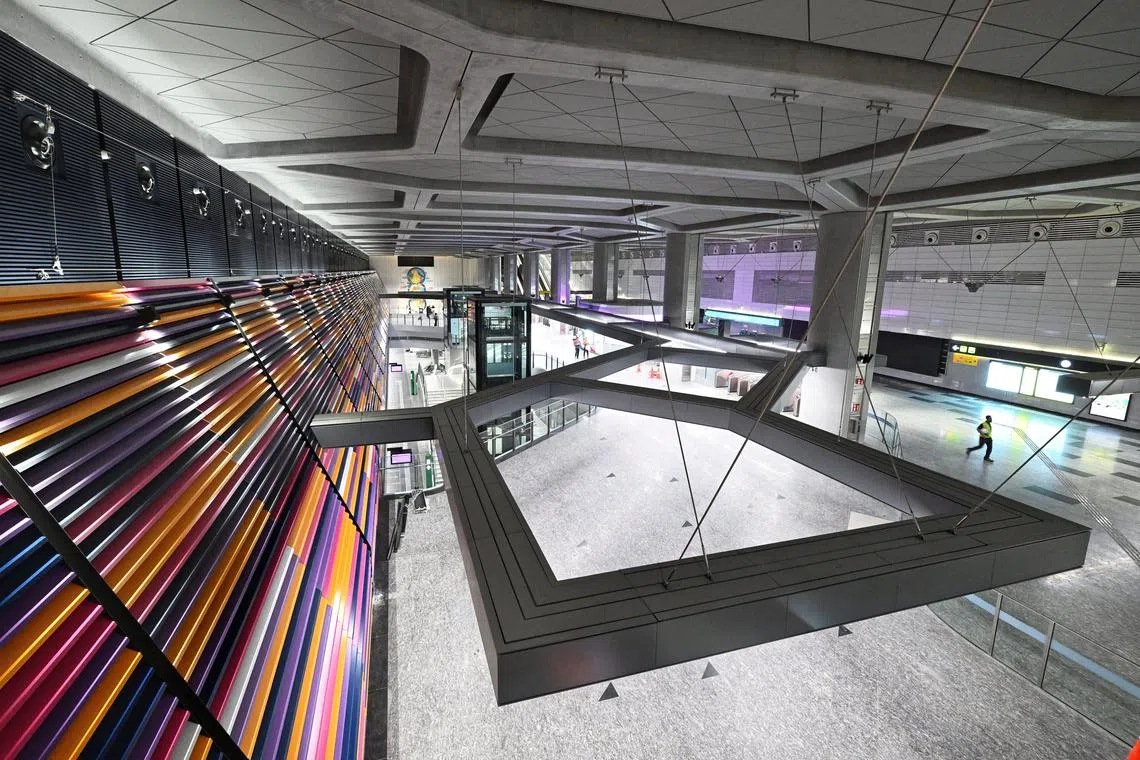
Besides the mangrove-inspired columns, passengers will see a series of pendant lights suspended from the high ceiling.
ST PHOTO: CHONG JUN LIANG
This is to create “an uplifting, cathedral-like atmosphere, enriching commuters’ sense of arrival”, said Mr Michael Ong, deputy director of architecture at LTA, during a media visit to the station on Nov 29.
Passengers who cycle can make use of six bicycle parking areas around the PDD, with a total of 1,212 spaces, including two at the station’s entrances that have 300 spaces in total. Of the six bicycle parking areas, three with more than 600 spaces in total have facilities such as shower cubicles and lockers, JTC said.
There is also an upcoming 1.3km cycling and walking route that will connect Punggol Waterway Park to Punggol Point.
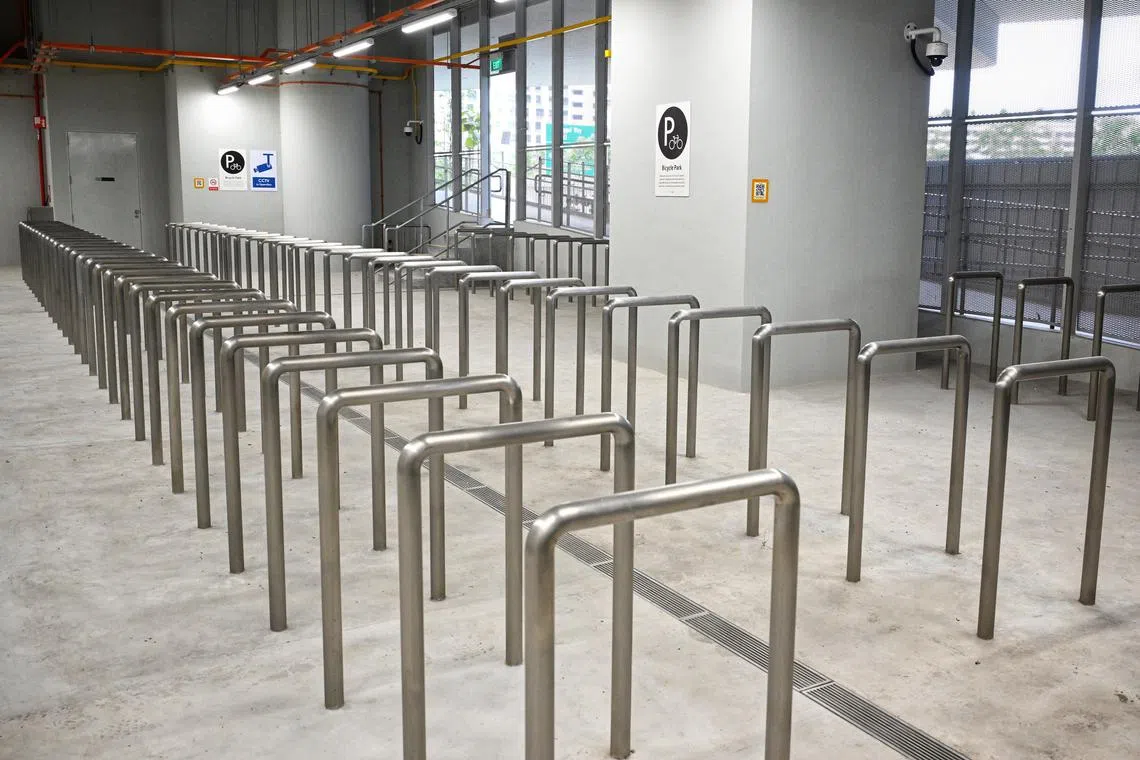
Passengers who cycle can make use of six bicycle parking areas around the PDD with a total of 1,212 spaces.
ST PHOTO: CHONG JUN LIANG
LTA and JTC said the station took four years to design and six years to build – including a brief disruption due to the Covid-19 pandemic.
Construction began in 2018, in tandem with the development of the PDD. Architectural work on the interior, such as ceiling, floor and wall finishes and platform seating, started in 2022 and was completed in 2024.
The station is the first to be conceptualised using design thinking, with LTA gathering commuter feedback, carrying out studies and prototyping concepts.
The result is a more community-centred space, with a venue for community events and spaces for people to gather, Mr Ong said.
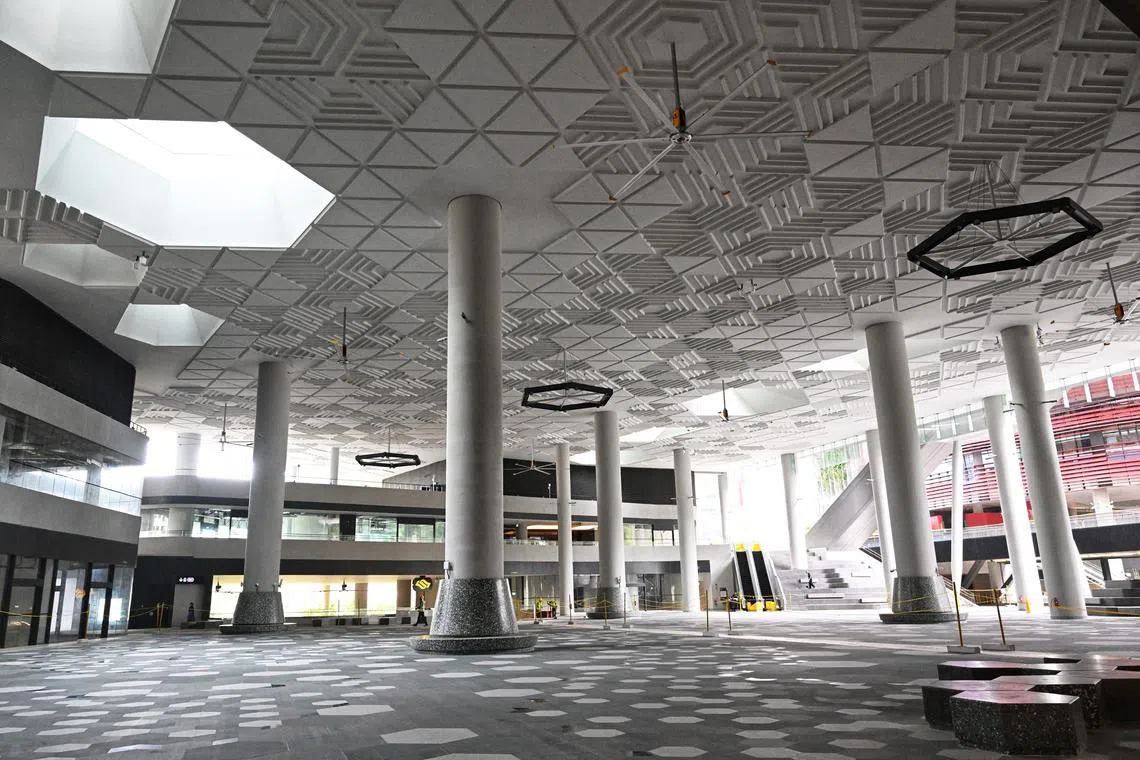
A view of the sheltered community plaza above the Punggol Coast MRT station.
ST PHOTO: CHONG JUN LIANG
Architects and engineers involved in the project told reporters that by integrating the station and the PDD, they managed to optimise land use and save time and resources during construction.
For example, the developments share pick-up and drop-off points, and the station uses the PDD’s district cooling system, said PDD project manager Mo Wing Sze.
But the integration and synchronised completion of the PDD and the station had to be carefully managed.
As LTA started tunnelling works from the existing Punggol MRT station towards Punggol Coast station, JTC prepared the site for the new station, including a 30m-deep vertical shaft at the boundary of the PDD, Ms Mo said.
LTA constructed the tunnels from Punggol station, stopping at the PDD boundary, where the tunnel boring machine was removed through the vertical shaft.
JTC then took over the construction of the tunnel. It also built the station before handing over both to LTA for architectural work.
The project was not without its challenges.
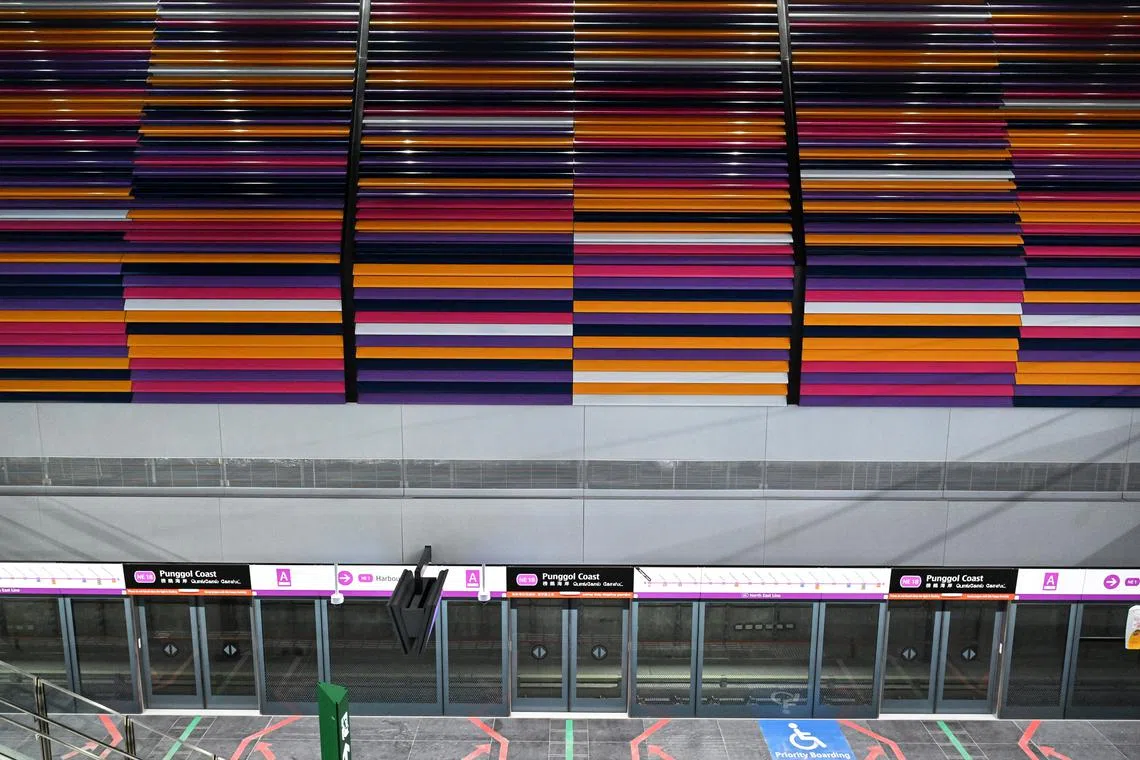
LTA and JTC said the station took four years to design and six years to build – including a brief disruption due to the Covid-19 pandemic.
ST PHOTO: CHONG JUN LIANG
Mr Ng Jin Teik, deputy director of LTA’s civil engineering team, said it was challenging to carry out tunnelling works “in close proximity” to the live operations of the Sengkang-Punggol LRT line and the Punggol MRT station.
Ms Mo said the situation was further complicated by the simultaneous construction of the station, the PDD and SIT – with work taking place right next to live LRT viaducts.
As the new station provides structural support for the PDD, this presented unique challenges for the design process.
Ms Mo said the team had to navigate a “complex web of different codes and practices for transit and building design”.
“The structural integration of these developments meant that even minor design changes could have far-reaching implications,” she said.
The opening of Punggol Coast station will improve transport connectivity for 12,000 students at SIT’s Punggol campus
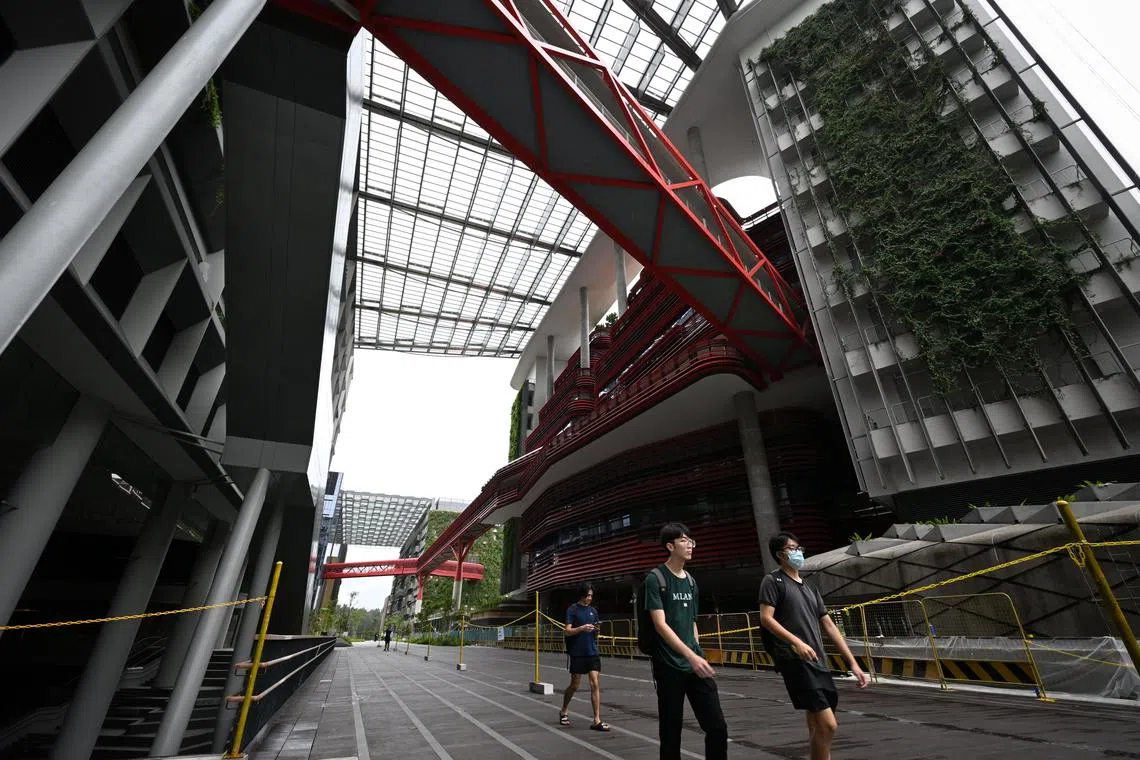
The new station will benefit some 12,000 students from the Singapore Institute of Technology’s Punggol campus.
ST PHOTO: CHONG JUN LIANG
About 3,800 SIT students have moved to the Punggol campus so far, with the rest expected to relocate by early May in 2025, an SIT spokesperson told The Straits Times on Nov 29.
Tenants of JTC Business Park will start to move in during the first quarter of 2025, said JTC.
The new station will cut travel time from Punggol North to the city centre and other parts of Singapore. For example, passengers will take about 45 minutes to get from Punggol North to Outram Park on the NEL, compared with the current 60-minute journey that includes a bus ride from Punggol North to Punggol station.
To accommodate the increased capacity from the Punggol Coast extension, LTA previously announced that six NEL trains will be added, bringing the total fleet from 43 to 49.


